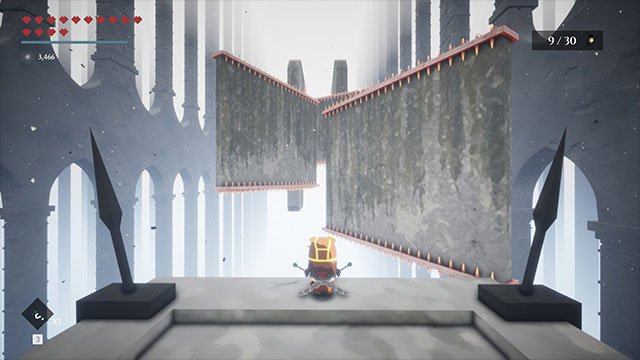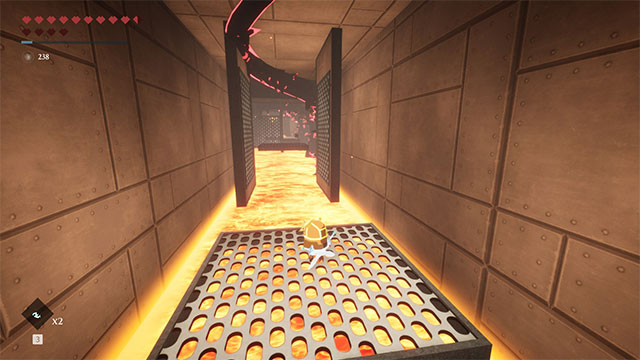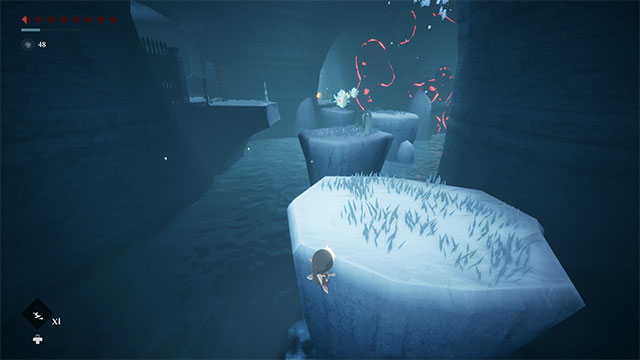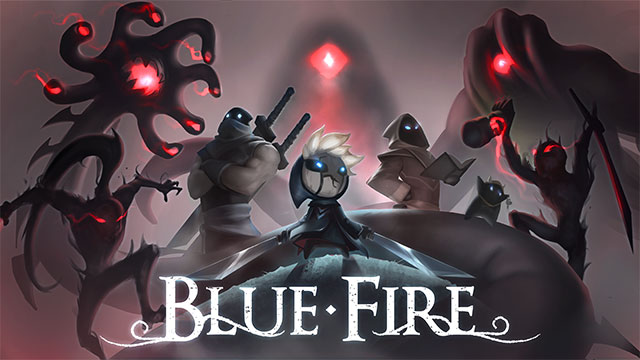Precision platforming challenges are often a thing of absolute delight in video games. They’re a combination of finely honed movement, masterful platform placement, and a series of clockwork elements all coming together to elevate jumping puzzles to something beyond the norm.
Mario games know this well and slowly crank the difficulty up over the course of play, knowing that players will acclimatize and rise to the challenge as they get to grips with their avatar’s movement.
Blue Fire is a decent stab at replicating the euphoria that comes with nailing sequences of perfect jumps, dashes, and wall runs. It derives its structure not from Mario but from Nintendo’s other mainline series, The Legend of Zelda, and adds a pointless dash of Soulslike difficulty for no discernible reason.
Blue Fire Review: A Dash Too Far
Pitting you as a small masked character with dual swords and a speedy dash, Blue Fire also packs in z-targeting combat, magic attacks, and a set of unlockable Spirits that function similarly to Hollow Knight’s charm system, allowing you to buff certain aspects of your move set.
The story is fairly simple: a calamity has befallen the world while you slumbered, and you have woken up to a shadowy force encroaching on the castle you call home. A knight named Von says that as a warrior of both shadow and light, you are the one fated to purge the world of shadow by freeing the goddess.
This task requires you to track down three benevolent spirits situated in temples reminiscent of Zelda puzzles. Shortly after, the quest evolves, requiring you find and defeating three different three evil spirits, switching the game’s focus from platforming to combat.
Sadly, it’s a poor one, as the combat doesn’t do Blue Fire any favors. It’s a miserable mesh of simplistic enemies with poor combat tells and bad hit/damage feedback that makes the whole affair feel underbaked.
While the platforming is far preferable, it has its issues too. Progression isn’t heavily telegraphed, which feels derived from the Souls style world-design, but when this is coupled with tricky jumping sections, it’s hard to know if a lack of progress is due to difficulty or lack of ability.

One memorable hour saw me trying to climb a large tower full of tricky wall jumps and wall runs only to give up and wander the world for a while. I then stumbled across a door that led to a dungeon, which then gave me a double jump ability that made the tower trivial.
Given that some of the platforming sections before this were dictated by trial and error — asking me to mix jumps, dashes, and wall runs into a harrowing combination — such a random lack of direction is frustrating, especially when the traversal is incredibly rewarding when it does work.
Sending your avatar dashing and double jumping around is responsive, and conquering challenges is often its own reward. Some of the best come in the form of “voids,” discrete platforming areas of various difficulties suspended in a featureless void. They really test your platforming mettle and are so nearly brilliant, but they all seem to go on too long, with absolutely no checkpoints.
You can get all the way to the last jump and mess up, and you’ll be punted right back at the start. It’s a frustrating sequence that doesn’t work well with the game’s finicky wallrunning controls, and it’s exacerbated by spikes and buzzsaws that will also send you back to the start at the slightest touch.

The last great sin of Blue Fire is its dependence on Ore to buy spirits and unlock checkpoints. The latter is particularly baffling, as you have no way of knowing what the bonfire-style shrines will cost to unlock. Just like in the Souls games, you drop your ore where you die, so if you are carrying a chunk and give up the ghost, you’re often in a perilous place.
There were more than a handful of times I arrived at a shrine without enough money, only to die later and be sent back to a much earlier shrine; the slog of saving up and getting back rarely felt interesting and was more an arbitrary punishment than anything else.
A prevalence of bugs also hampered my experience, with numerous crashes to desktop, instances of the controls going unresponsive, and enemy contact rag dolling my character into bottomless pits. At one point, the game even let me sell over 70,000 ore’s-worth of items despite the fact my wallet could only hold 2,000 ore. It didn’t refund me the other 68,000, so I had to load an earlier save.
That’s not to mention there is only one place to sell ore as far as I could tell, so the need to teleport back to a specific area to earn money to buy better wallets and unlock shrines means that there is a whole lot of pointless backtracking. It’s more baffling when you consider every area tends to have its own merchants.
These aren’t game-breaking issues, but they’re prickly enough that they stick in my mind well after completion.
Blue Fire Review — The Bottom Line

Pros
- Clean and sharp aesthetic design
- Fast, response platforming
- Lots of secrets to hunt out
Cons
- Messy, unresponsive combat
- Lack of direction at times
- Checkpoints cost money for no real reason
- Plethora of crashes and technical issues
The presentation of Blue Fire is clean and elegant. It’s clear a lot of care and love has gone into the lore, writing, music, and overall design of the game. But sadly, the actual mechanical parts don’t quite hang together.
There are a lot of interesting ideas at work, but they just can’t elevate Blue Fire above a curiosity. Coupled with the bugs, I’m hesitant to recommend it to anyone but the most ardent of platforming fans.
[Note: ROBI Studios provided the copy of Blue Fire used for this review.]







Published: Feb 11, 2021 08:07 am